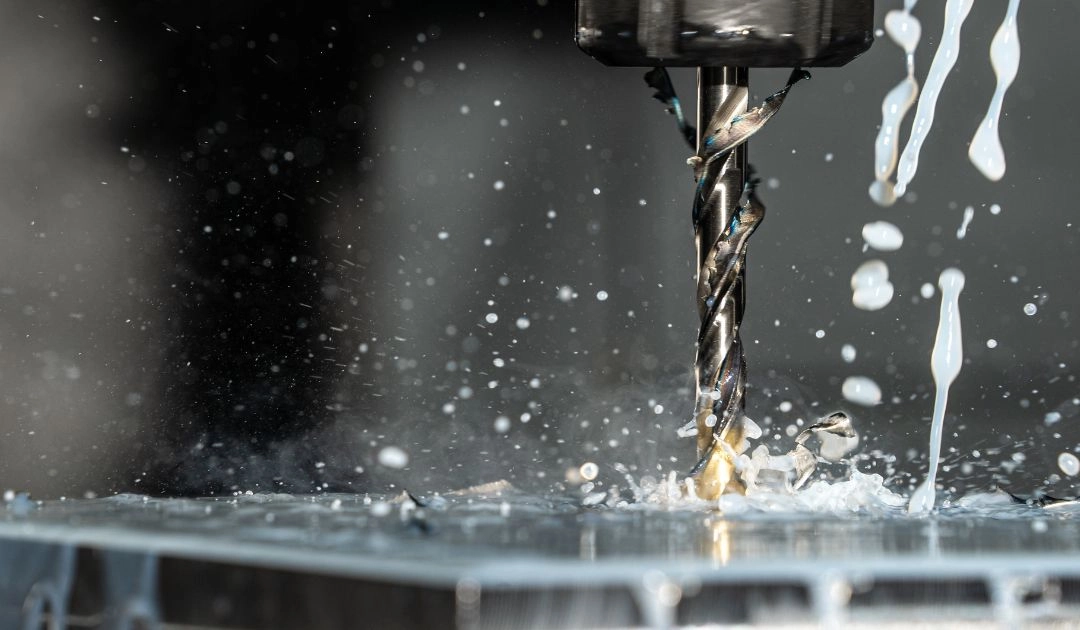EDM fluid technology refers to the advancements and innovations in the development and formulation of dielectric fluids used in Electrical Discharge Machining (EDM) processes. These fluids play a crucial role in the EDM process by providing electrical insulation, cooling, and debris removal. Advancements in EDM fluid technology have resulted in fluids with improved properties and performance.
Base oils, additives, and surfactants are all included in the composition of modern EDM fluids, which have been designed with optimum compositions. By improving the fluid’s flushing abilities, these compositions guarantee efficient debris removal and cleaner machining conditions. Increased flushing qualities result in less electrode wear, longer tool life, and better surface polish.
Importance of EDM Fluid Technology
EDM Fluid Technology serves a vital role in the following aspects:
- Facilitating EDM Processes: EDM fluids act as a conduit for electrical discharges between the electrode and the workpiece during the machining process, facilitating the EDM process. They offer electrical insulation, enabling precise and regulated discharges. EDM cannot function successfully or correctly without the proper dielectric fluid.
- Debris removal: During the machining process, EDM fluids are essential for removing debris. The fluid washes away the dust produced by the machining activity as electrical discharges take place. Effective debris removal lowers the possibility of electrode wear, workpiece damage, and subpar surface finish by maintaining a clear and unobstructed machining area. It also guarantees the truthfulness and reliability of
- Reduced electrode wear: The type of EDM fluid selected and its characteristics have a big impact on how much electrode wear occurs throughout the machining process. Modern EDM fluids are made with lubricating and cooling additives to minimize friction and heat generation. This leads to less electrode wear and longer tool life, which lowers costs, boosts productivity, and improves dimensional control.
- Precision and Surface Finish: EDM fluids help machined components have the necessary surface finish and dimensional precision. Their characteristics, including flushing prowess, cooling, and lubrication, have an impact on the effectiveness and caliber of material removal. Manufacturers can obtain higher surface finishes and accurate machining tolerances by selecting the right EDM fluid and adjusting its properties.
- Machining efficiency and speed: Improvements in EDM fluid technology have resulted in better flushing qualities, which enable quicker removal of debris and faster machining speeds. Manufacturers can raise pulse rates and cutting speeds with effective debris evacuation without sacrificing accuracy or surface smoothness. As a result, the machining process is more productive, has shorter cycle times, and is more efficient overall.
- Environmental sustainability: EDM fluid technology is developing to address sustainability as environmental issues become more prominent. EDM fluids that are biodegradable, low in toxicity, and comply with environmental requirements are being developed by numerous producers. These fluids reduce the machining process’ negative environmental effects and promote green manufacturing methods.
Recent Upgrades in EDM Fluid Technology:
Advancements in EDM fluid technology have brought in several upgrades to the Electrical Discharge Machining (EDM) process. Here is a list of key advancements and their corresponding benefits:
- Improved flushing properties:
Benefit: Efficient debris removal, cleaner machining area, reduced risk of electrode wear and workpiece contamination, improved surface finish.
- Enhanced lubrication and cooling properties:
Benefit: Reduced friction and heat generation, minimized electrode wear, extended tool life, improved dimensional accuracy.
- Higher dielectric strength:
Benefit: Increased machining speeds, higher discharge energies, improved process efficiency, reduced cycle times.
- Specialty fluids for specific applications:
Benefit: Tailored solutions for roughing, finishing, or high-precision operations, optimized performance, better control over machining requirements.
- Environmental sustainability:
Benefit: Biodegradable and low-toxicity formulations, compliance with environmental regulations, reduced ecological impact, support for sustainable manufacturing practices.
- Advanced additive packages:
Benefit: Improved lubrication, cooling, and anti-wear properties, enhanced machining accuracy, extended tool life, reduced downtime for tool replacement.
- Enhanced stability and consistency:
Benefit: Improved process control, reduced variability in machining results, better dimensional accuracy, enhanced repeatability.
- Compatibility with various materials:
Benefit: Suitable for a wide range of materials, including conductive and non-conductive materials, enabling versatility and flexibility in machining applications.
- Reduced maintenance requirements:
Benefit: Minimized fluid degradation, longer fluid life, lower maintenance costs, reduced downtime for fluid replacement or system cleaning.
- Compatibility with automation and high-speed machining:
Benefit: Suitable for automated EDM systems, compatible with high-speed machining requirements, enabling efficient and rapid production processes.
Together, these developments increase the EDM process’ performance, cost-effectiveness, surface polish, dimensional precision, and overall efficiency. Manufacturers can take advantage of these developments by choosing and using the most recent EDM fluids that are compatible with their unique machining needs. This will increase productivity and quality in their production operations.




